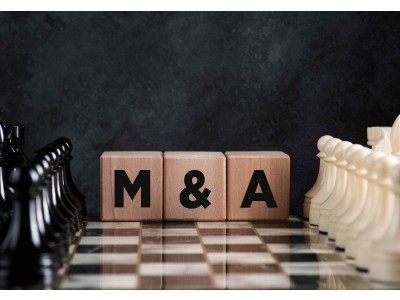Introduction
In a dynamic and constantly evolving business world, mergers and acquisitions (M&A) have become important strategies for companies that want to grow, adapt or simply survive. These transactions, often referred to as M&A, involve one company buying, merging with, or taking over a significant stake in another company. M&A are complex undertakings that, if done correctly, can bring huge benefits, but they also come with certain challenges and risks. In this article, we will delve into the world of M&A, exploring what they are, why companies engage in them, the types of transactions, and the key factors for a successful deal.
What are mergers and acquisitions?
Mergers and acquisitions are corporate strategies that involve the consolidation or combination of two or more companies to form a single entity or to expand the company's reach or capabilities. These transactions can take several forms:
1. A merger: In a merger, two companies of roughly equal size combine to form a new entity. The goal is to capitalize on the strengths of each organization, improve efficiency, and gain a competitive advantage.
2. Acquisition: An acquisition occurs when one company, often referred to as the “acquirer” or “buyer,” buys another company, the “target” or “seller.” The buyer takes control of the target's assets, operations, and liabilities.
3. Hostile takeover: During a takeover, one company acquires a controlling interest in another company, usually against the will of the acquired company. This can be a hostile takeover if the management of the target company opposes the takeover.
4. Purchase of assets: Instead of buying the entire company, the buyer can purchase specific assets or divisions of the target company. This approach allows for more selective acquisitions.
Why do companies pursue mergers and acquisitions?
Companies engage in mergers and acquisitions for a variety of reasons, including:
1. Strategic growth: Mergers and acquisitions can be a fast track to expansion. Companies can gain access to new markets, products or technologies that would take years to develop organically.
2. Cost synergies: By combining operations and eliminating duplicated functions, companies can achieve cost savings and greater efficiency.
3. Diversification: Mergers and acquisitions can reduce risk by diversifying a company's revenue streams. A company with one product line can acquire another with complementary offerings to create a more balanced portfolio.
4. Market share: Companies can gain a dominant position in their industry by acquiring competitors or complementary businesses.
5. Access to talent: Acquiring companies with skilled personnel can help solve the problem of talent shortages and increase innovation.
Key factors for a successful M&A transaction
Executing a successful merger or acquisition is no small feat and requires careful planning, due diligence and strategic thinking. Here are a few key factors that contribute to a successful M&A transaction:
1. Clear strategy: Define a clear strategic rationale for the transaction. Find out how the transaction aligns with your company's goals and long-term vision.
2. Due diligence: Thoroughly assess the financial health, legal situation and operational aspects of the target company. Identify potential risks and opportunities.
3. Valuation: Establish a fair and realistic valuation of the target company. Overpaying can nullify the benefits of the deal.
4. Integration planning: Develop a comprehensive integration plan to smoothly combine operations, cultures and systems. Post-M&A integration is often the stumbling block of many deals.
5. Legal and regulatory compliance: Navigate the complex legal and regulatory environment to ensure compliance at every stage of the transaction.
6. Communication: Inform and engage stakeholders, including employees, customers and investors, throughout the process to maintain trust and minimize disruption.
7. Retain talent: Develop strategies to retain key talent in both the acquiring and target companies, as changes can affect employee morale and productivity.
8. Monitor and adapt: Continuously monitor the progress of the integration and be prepared to make any necessary adjustments.
Conclusion
Mergers and acquisitions are powerful tools in the business world, enabling companies to grow, adapt and thrive in a competitive environment. However, they also pose significant risks and challenges. Success in mergers and acquisitions requires meticulous planning, thorough due diligence, effective integration and clear alignment with the company's overall strategy. When carried out correctly, mergers and acquisitions can create synergies, stimulate growth and unlock new opportunities, ultimately benefitting all parties involved.
About us
PlatformaInwestora.pl is an internet service that brings together users with interesting business and capital offers and investors looking for ways to invest their funds. Our service helps to raise capital, find a partner, finance start-ups, sell shares or entire companies, and presents interesting forms of investment. The portal reaches a wide range of investors, both Polish and foreign, and the number of industry offers makes it one of the leading capital investment services. Our employees actively help to edit investment advertisements because the mission of the PlatformaInwestora.pl website is to realize the business goals of our clients and help them to conclude as many business transactions as possible through us.
author: Joanna Dmitruk








